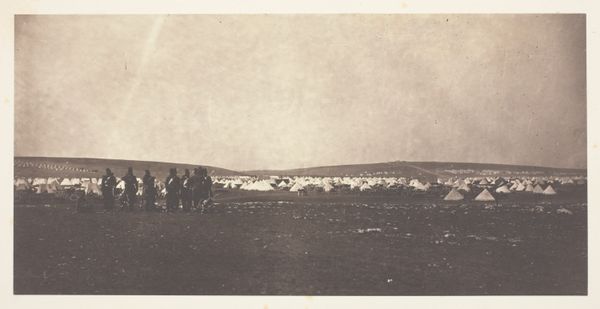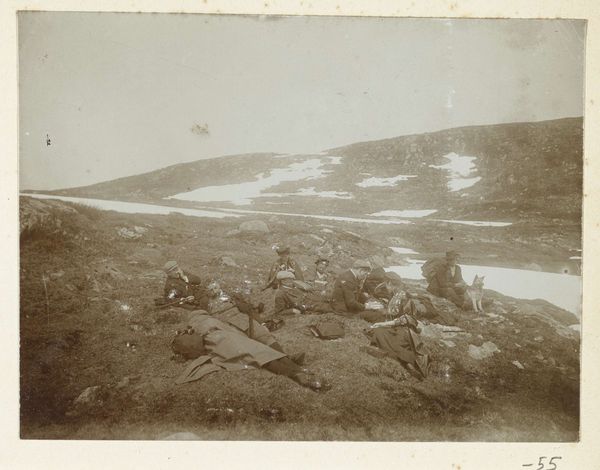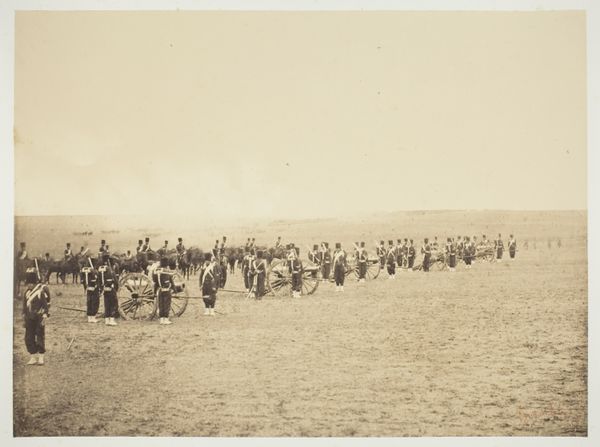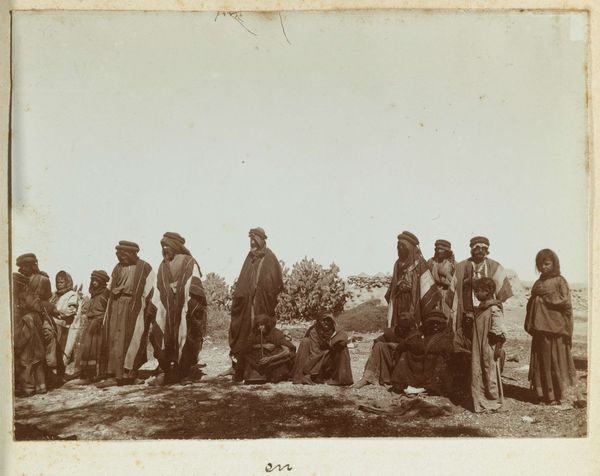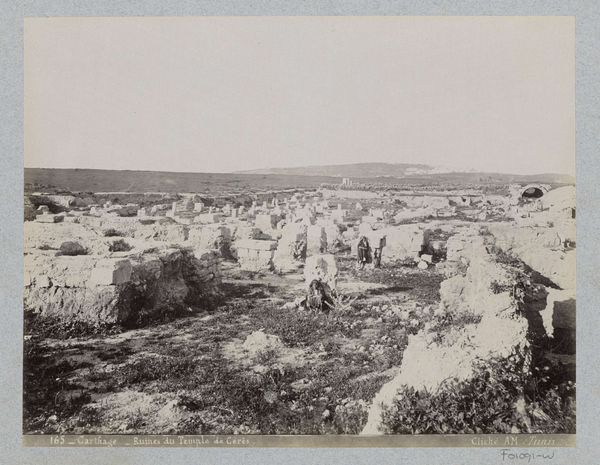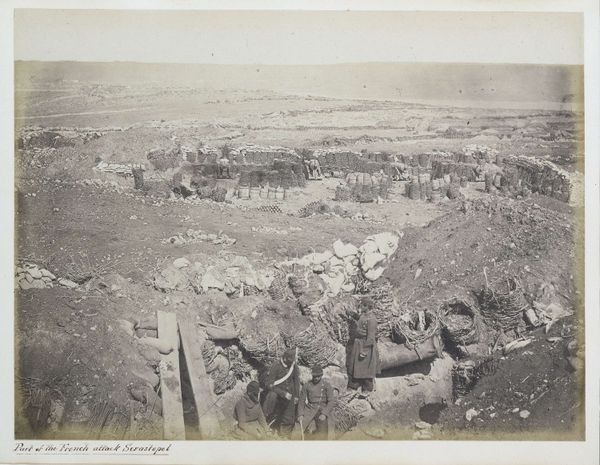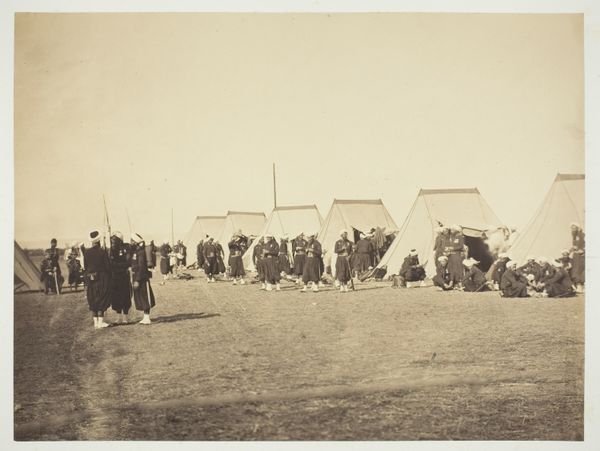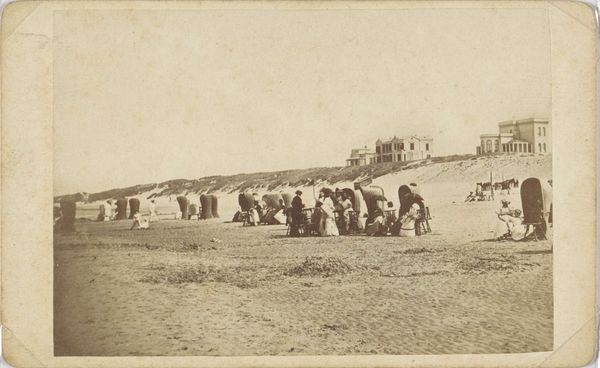
print, paper, photography, gelatin-silver-print
# print
#
organic shape
#
war
#
landscape
#
paper
#
nature
#
photography
#
england
#
gelatin-silver-print
#
history-painting
Dimensions: 16 × 26.1 cm (image/paper); 42.5 × 58.9 cm (mount)
Copyright: Public Domain
Curator: Roger Fenton captured this gelatin-silver print in 1855. Titled "The French Redoubt at Inkermann," it now resides at The Art Institute of Chicago and offers a fascinating look into the visual culture surrounding the Crimean War. Editor: It feels vast and oddly still. There’s a tension in the landscape—that sky heavy, like the calm before a storm, or perhaps more aptly, after one. Sepia-toned ghosts occupy the space; it’s as if time is holding its breath. Curator: Indeed, Fenton was commissioned to document the war, and this piece is exemplary of how photography was used to shape public perception. Notice the organized, if weary, French soldiers posed against a backdrop of rugged terrain. There’s a deliberate attempt to portray order amidst chaos. Editor: Order, you say? To my eye, the arrangement appears staged, perhaps sanitized. Where’s the mud, the blood, the visceral mess of war? It strikes me more as a tableau, a romanticized impression, like a pastoral scene gone wrong. Yet, somehow, that very absence speaks volumes. The missing horror amplifies the human cost, if you catch my drift. Curator: Precisely. Photography, especially in its early days, served specific political functions. Images like these were circulated in England to garner support for the war effort, carefully omitting its more gruesome realities. The placement of the figures in relation to the fortifications, the horizon, and the sky all contributed to an image designed to reassure, not to agitate. It's a history painting translated through a lens. Editor: I see it, the composed strategy…the calculated absence. Knowing its context definitely shifts the weight of it. Now, there is something profoundly unsettling about how beautifully this bleak, constructed reality reflects back upon us—a subtle warning from the past perhaps, to beware the curated narratives of conflict. Curator: Absolutely. It is a poignant reflection of the complexities inherent in representing historical events. Editor: A stark, beautiful, eerie document. Definitely worth more than a second glance, and probably a long, hard ponder, too.
Comments
No comments
Be the first to comment and join the conversation on the ultimate creative platform.
